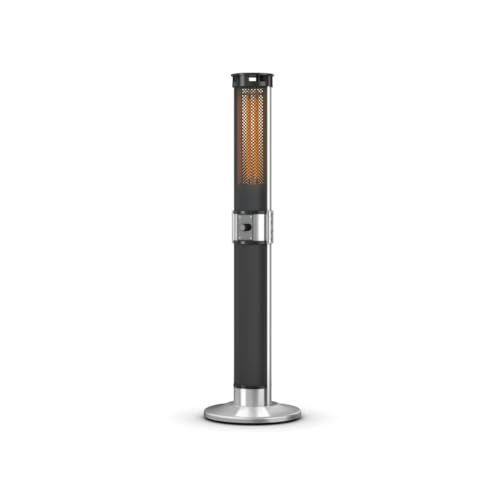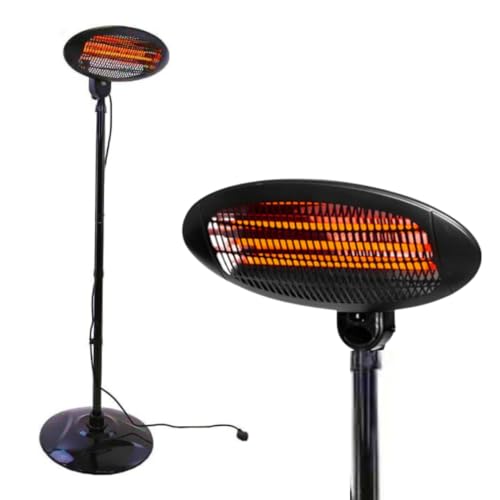10 Things That Your Family Taught You About Gas Or Electric Patio Heat…
Leatha
2024.11.28 08:33
185
0
본문
 Choosing a Gas Or Electric Patio Heater
Choosing a Gas Or Electric Patio HeaterThe majority of patio heaters utilize electricity or propane to power them. Electric heaters are more simple to operate and are less expensive than propane heaters.
However you must be near to an electrical outlet and use extension cords with rated outdoor if the heater will be used for long periods of time. To prevent risk, it is essential to inspect the power cord on a regular basis for frayed areas.
How to Choose the Right Heater
You must consider the BTU power (boiler-rated total heat output) to ensure that your patio heater will effectively heat your space. This is based on the area you have and is therefore important to calculate before choosing a model. If you're unsure of what to do, a rule of thumb is to multiply your square footage by 20 which will provide you with an approximate estimate of the amount of heat you need.
Propane models generally have higher BTUs than electric options, so they may be a better option for large, well-ventilated areas. Gas heaters are also more expensive to operate than electric ones. This is due to the high cost of propane tanks and gas pipes and the cost of fuel.
If you're considering purchasing an outdoor gas heater for your home, you'll need to make sure that the heater features a thermocouple safety device. It is a vital element of any gas-powered heater, because it stops the flame when it goes out of control or fails to ignite. It's a basic feature that could prevent the risk of carbon monoxide poisoning and other hazards.
You'll have plenty of options when it comes time to pick an electric patio heater. You can opt for wall-mounted heaters, bar-shaped heaters with stands, parasol heaters and tall freestanding designs. Some models look chic, while others are more practical and utilitarian.
One benefit of electric patio heaters is that they don't create emissions and can be utilized in small enclosed areas without the need for special venting. Electric patio heaters are also more affordable and easier to maintain than gas-powered ones, which makes them an excellent alternative for homeowners who want to minimize their environmental impact. In addition they are available in various shades to complement your decor. They also can be recessed into the ceiling to create a more subtle installation.
Safety
As with any heat source, patio heaters have some security issues to consider. For one, they produce lots of heat, which means they should be kept away from any flammable items such as furniture, curtains carpets, decorations and carpets. Also, they should be placed on non-flammable surfaces, such as tiles or concrete. Experts recommend an optimum clearance of three feet around the heater from all sides.
Gas patio heaters are not to be used indoors or in enclosed spaces. They produce harmful gases and carbon monoxide which can cause harm to the people who use them. propane gas patio heater or natural gas patio heaters should be used outdoors, with plenty of ventilation. This will stop dangerous fumes from escaping.
The advantage of electric patio heaters is that they don't release any fumes, making them the most secure option of all four types of outdoor heating. They can also be powered by a steady source of electricity, which is a plus since it doesn't require refueling or replacing lines or cylinders. The heaters can only be used for as long as electricity is available. Consult your local fire department or city building codes to learn more about the rules and regulations that are applicable to your area in the event that you plan to use heaters outside.
If you're considering natural gas, propane or an electric model, make sure to purchase one that has a good warranty in case there are any problems. Electric and gas models should be inspected by a professional before the start of every season. This will ensure that they are operating properly and won't create any safety concerns over time.
The cost of natural gas and propane patio heaters will increase if the cylinder is not replaced on a regular basis. The convenience of being in a position to put an all-new gas cylinder into place is worth the additional cost for many homeowners.
Installation
When it comes to the installation of your new patio heater it is important that you allow professionals to take care of it. This is because both gas (propane or natural) and electric systems are large, mounted systems that will require securement. They also run at higher voltages which is why they require a lot of attention to their installation.
Always make sure that your gas patio heater is vented correctly. This will stop carbon monoxide from building up in your home. Carbon monoxide is dangerous. It is recommended to only use approved tanks and to have your propane tank topped off as needed. Gas patio heaters are typically more efficient than electric heaters however they can be less portable as the propane tank will have to be replenished regularly.
Installing electric heaters in a protected space will help reduce heat loss. It will also protect the heater against inclement weather and debris that could cause damage. You may need to use an extension cable for outdoor use with your electric heater in some circumstances. Be sure to select a heavy duty model that is suitable for outdoor use.
Electric and gas patio heaters come in various designs, including freestanding models, wall-mounted versions, and ceiling-mounted ones. They are available in various colors and finishes that will match your existing decor. Some price of patio gas the most sought-after options include brushed stainless steel and oil rubbed bronze and matte black gas patio heater.
The best method to determine which heater is suitable for your requirements will depend on a variety of aspects, including the heating capacity of your region and the cost of energy in the region. The most important thing to consider is security. Be sure that the appliance you purchase comes with a built-in flame sensor, which will shut off the system in the event that the flame goes out. Some models have protective guards around the burner, which could help reduce the chance of a fire, and also prevent accidents.
Maintenance
No matter what kind of heater you pick the need for proper maintenance is essential to ensure safe and efficient operation. This is especially relevant for patio heaters that use gas, as they are more likely to have problems than their electrical counterparts due to the fuel source.
Examine regularly for the presence of carbon deposits in the orifices of the pilot tubes in heaters that run on gasoline. These can inhibit combustion, leading to a decrease in heat output and could pose a fire hazard. The thermocouple as well as the regulator should also be inspected to make sure they are in good shape. These components can be repaired or replaced by a professional if necessary.
Propane and natural gas patio heaters should be inspected for leaking gas lines and other safety concerns at least once a year. The inspection should be conducted by a licensed gas professional and includes looking for damage to the electrical wiring that can be damaged through exposure to the elements as well as curious animals.
Infrared patio heaters are much less expensive to maintain than gas-powered ones. They make use of radiant heating to warm people and objects instead of simply warming the air around them, which is why they tend to be more efficient in warming patios. Gas heaters emit carbon dioxide and greenhouse gasses into the air when in use. They don't.
If you use propane or natural gas for your patio heater, keep an extinguisher near it and remind your guests to be vigilant when they are sitting too close. Regularly cleaning the burner screen and dome of your patio heater is crucial to get rid of dust, dirt and other debris. If you notice a buildup of carbon, which can inhibit the flame, you might have to replace the element or igniter.
 Every time you change the gas bottle, make sure that the hose connection to the regulator is secure -- the Jubilee clip must be secure and there shouldn't be visible movement between the two parts. At least every few months you must give the hose a "soap-test" to make sure it isn't leaky.
Every time you change the gas bottle, make sure that the hose connection to the regulator is secure -- the Jubilee clip must be secure and there shouldn't be visible movement between the two parts. At least every few months you must give the hose a "soap-test" to make sure it isn't leaky.
댓글목록 0